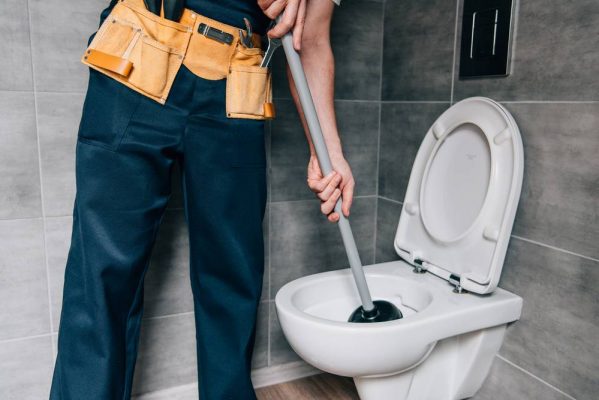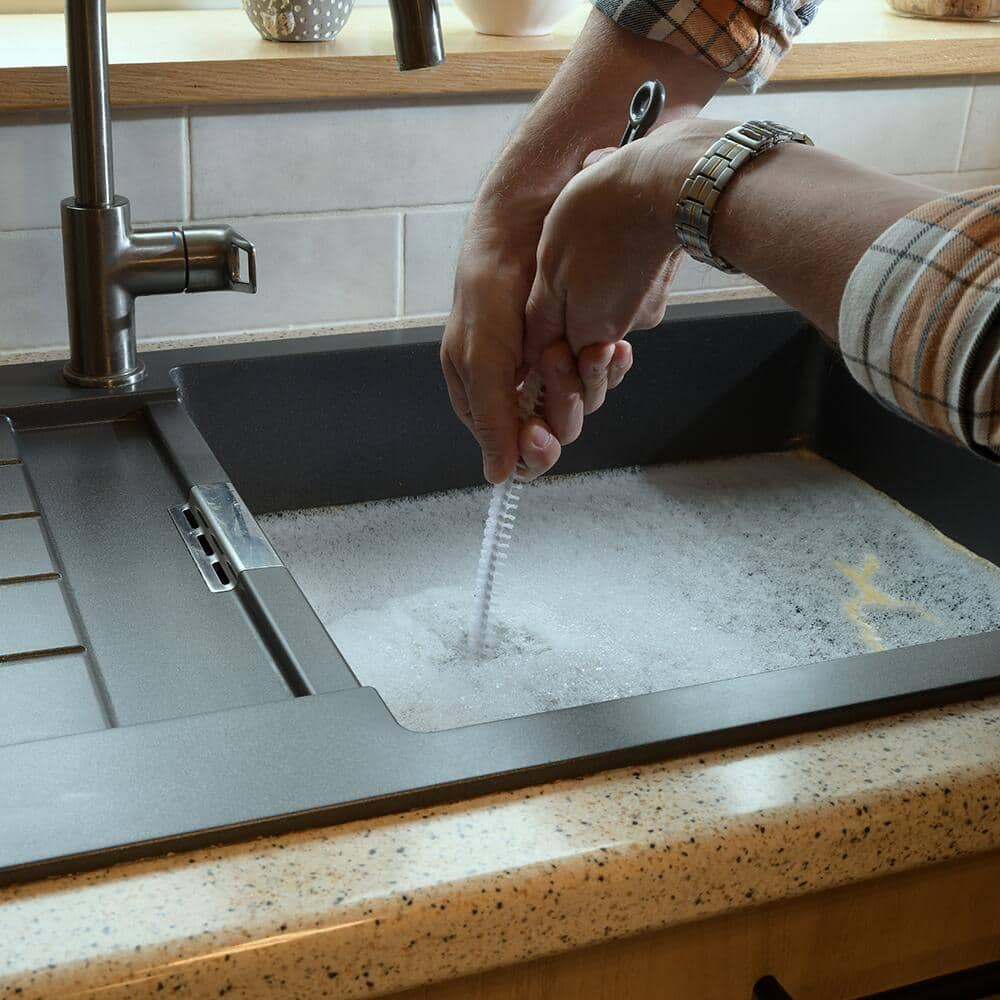Perfecting Plunger and Drain Cleaners: Crucial Tips
Perfecting Plunger and Drain Cleaners: Crucial Tips
Blog Article
We have found this great article pertaining to Tips on How to Effectively Use a Plunger listed below on the net and concluded it made sense to write about it with you in this article.

Introduction
Appropriate upkeep of family drains pipes is essential for stopping blockages and ensuring smooth water circulation. Among the secret devices in every house owner's toolkit is the plunger, along with different drainpipe cleaners created to tackle stubborn blockages efficiently. This post explores how to use bettors and drainpipe cleansers effectively to keep your drains moving freely.
Area 1: Recognizing Plungers
Sorts of Plungers
There are several sorts of bettors readily available, each developed for different kinds of drains pipes and obstructs. The most typical types consist of mug plungers, flange plungers, and accordion bettors.
Just How Plungers Work
Bettors service the concept of creating stress and suction to remove blockages. When correctly used over a drain, they create a vacuum that can take out debris or break up blockages.
Choosing the Right Bettor
Picking the ideal bettor relies on the type of drainpipe and the nature of the blockage. Mug plungers are ideal for sinks and bathtubs, while flange plungers are better fit for toilets due to their layout.
Typical Errors with Plungers
Avoiding these errors makes certain reliable plunging: incorrect seal around the drain, insufficient force, and not clearing surrounding debris.
Section 2: Using Plungers Efficiently
Preparation
Prior to plunging, make certain the bettor covers the drain entirely and forms a tight seal. Clear any type of noticeable particles around the drain opening.
Technique
Start with gentle diving motions to build suction. Increase stress slowly, utilizing a steady rhythm. Repeat as required until the drainpipe gets rid of.
Fixing Tips
If plunging does not function, attempt readjusting the seal, using oil jelly for a much better seal, or utilizing a various type of bettor.
Area 3: Recognizing Drainpipe Cleansers
Sorts Of Drain Cleaning Company
Drain cleaners can be chemical or enzymatic. Chemical cleansers utilize strong chemicals to dissolve obstructions, while chemical cleansers utilize natural enzymes to break down raw material.
Exactly How Drainpipe Cleaning Company Job
Chemical cleaners respond with clogs to liquify them, while enzymatic cleansers break down natural materials like hair and oil without hurting pipes.
Safety and security Considerations
Always use gloves and eye security when making use of chemical drainpipe cleaners. Ensure sufficient ventilation and adhere to producer directions very carefully.
Eco-Friendly Alternatives
Think about using vinegar and baking soft drink or enzyme-based cleaners for environment-friendly choices that are safer for pipelines and the setting.
Area 4: Utilizing Drain Cleansers Successfully
Application Strategies
Pour chemical cleansers directly right into the drainpipe opening. Enable them to help the suggested time before purging with warm water. Chemical cleansers need to rest over night.
Precautions
Stay clear of blending various kinds of cleansers, as this can create harmful fumes. Never ever use chemical cleansers combined with a plunger, as spilling can occur.
Handling Stubborn Obstructions
For consistent obstructions, consider making use of a pipes serpent or calling a professional plumbing technician to avoid damages to pipelines.
Final thought
In conclusion, understanding exactly how to use bettors and drain cleansers properly is vital for maintaining healthy plumbing systems. By picking the right devices and techniques, house owners can deal with minor obstructions and prevent significant pipes issues down the line.
4 DIY Ways to Unclog Drains
Wire Hanger
This age-old technique has been used by many an amateur plumber – to much success. Take any wire hanger, deconstruct its shape and leave a small hook shape on the end. Time to go fishing! Remove the shower or sink drain cover and snake the wire into the drain, wiggling and rotating it as you push it through. Dispose of the gunk that you remove and flush the drain with hot water. Rinse with a pan of boiling water for best results.
Plunger
Creating a suction in your drain can break up clogs caused by hair and soap residue build up. First, make sure you are using the correct type of plunger, one specifically for sinks or tubs. They are typically smaller than regular toilet plungers and often have a shallow suction cup. Regular plungers can work too but we’d recommend cleaning them first and finding a way to create better suction over the drain.
Baking Soda and Vinegar
This technique is a classic – and one of the most popular DIY drain unclog methods. Pour one cup of baking soda and one cup of vinegar down the drain and allow it to work its magic overnight. The next morning, flush the drain with boiling water. Repeat if necessary.
Drain Snake/Hair Clog Tool
If you know your clog is caused primary by hair, a drain snake/hair clog tool might be your best option. These tools can be purchased for under $10 at any hardware store and work well so long as the clog isn’t too deep in the drain.
https://www.callcatons.com/blog/four-diy-ways-to-unclog-drains/

Application Strategies
Pour chemical cleansers directly right into the drainpipe opening. Enable them to help the suggested time before purging with warm water. Chemical cleansers need to rest over night.
Precautions
Stay clear of blending various kinds of cleansers, as this can create harmful fumes. Never ever use chemical cleansers combined with a plunger, as spilling can occur.
Handling Stubborn Obstructions
For consistent obstructions, consider making use of a pipes serpent or calling a professional plumbing technician to avoid damages to pipelines.
Final thought
In conclusion, understanding exactly how to use bettors and drain cleansers properly is vital for maintaining healthy plumbing systems. By picking the right devices and techniques, house owners can deal with minor obstructions and prevent significant pipes issues down the line.
4 DIY Ways to Unclog Drains
Wire Hanger
This age-old technique has been used by many an amateur plumber – to much success. Take any wire hanger, deconstruct its shape and leave a small hook shape on the end. Time to go fishing! Remove the shower or sink drain cover and snake the wire into the drain, wiggling and rotating it as you push it through. Dispose of the gunk that you remove and flush the drain with hot water. Rinse with a pan of boiling water for best results.
Plunger
Creating a suction in your drain can break up clogs caused by hair and soap residue build up. First, make sure you are using the correct type of plunger, one specifically for sinks or tubs. They are typically smaller than regular toilet plungers and often have a shallow suction cup. Regular plungers can work too but we’d recommend cleaning them first and finding a way to create better suction over the drain.
Baking Soda and Vinegar
This technique is a classic – and one of the most popular DIY drain unclog methods. Pour one cup of baking soda and one cup of vinegar down the drain and allow it to work its magic overnight. The next morning, flush the drain with boiling water. Repeat if necessary.
Drain Snake/Hair Clog Tool
If you know your clog is caused primary by hair, a drain snake/hair clog tool might be your best option. These tools can be purchased for under $10 at any hardware store and work well so long as the clog isn’t too deep in the drain.
https://www.callcatons.com/blog/four-diy-ways-to-unclog-drains/

I stumbled upon that write up on How to Unclog Your Sink with a Plunger while perusing the web. Do you know another individual who is interested in the niche? Why not share it. Thanks for taking the time to read it.
Call Today Report this page